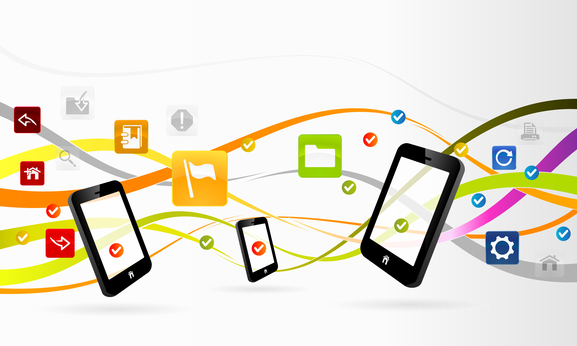
Publishers are looking for ways to integrate advanced graphics and interactivity in digital books. Until recently this was not possible. Tablets such as iPad or Android tables have advanced graphical capabilities that until recently where not utilized by digital books.
So in order to utilize these advanced graphical capabilities people started writing specific application for displaying a book with advanced graphics. This is a good solution, however it has many drawbacks that digital books written under an open standards does not have.
Main drawbacks of book applications:
- An app is dependent on the platform it runs on. An app written for iPad will not run on Android and vice versa, so the publisher have to create two apps in order to be readable on platforms used by most people. moreover, although Android and Apple control most of the tablets market, there are other tablets around such as BlackBerry, Windows 8, etc, so if you write an app for your book that runs on Apple and Android it will still not run on BlackBerry or Windows 8.
We can not predict how the tablet market will look like in few years, there may be other tablet operating systems that will rule the market. - Installing many apps cultures the application menu on the customer's tablet which makes it harder to find the book again and read it.
- Future operating systems of tablets may not support applications written for today's tablets so publishers run the risk that in few years their books will be unreadable.
- The customer has to install an application instead of just downloading the ebook.
The solution: Using EPUB3 standard
EPUB3 allows publishers to embed video, audio, media overlay (speak aloud / read along) and also advanced interactivity using JavaScript inside their ebooks. In fact all that people can do with HTML5 they can do with EPUB3 since internally EPUB3 is using HTML5.
Why use EPUB3 for ebooks?
Most operating systems whether for tablets or PC have at least one EPUB3 reading application so people don't have to worry about platform compatibility, they can concentrate on their book only.
In the future, when operating systems will upgrade, the reading applications will also be upgraded, so publishers do not have to worry about upgrading their ebooks.
When using an EPUB3 ebook, publishers don't have to use a different version of the same book for different platforms. Publishers can distribute just one version that would be readable on all devices.
This is just as writing a website. If you write it according to W3C standards, your users can view the content no matter what browser they are using, whether it is Firefox, Chrome, Safari or even Internet explorer.
What are the drawbacks of using EPUB3?
Well unfortunately nothing is perfect and even this approach although it has many advantages, still have few drawbacks. The main drawback today is that some reading systems do not fully support the standard and thus will not be able to display some advanced graphics. It seems like a temporary situation as the reading systems advance rapidly and new reading systems are introduced every day.
The other drawback is that as of today there are no good automatic authoring tools to create EPUB3, however even with printed books publishers usually use professional services for typesetting, so they can use professional services such as Helicon Books convertion services to create their digital books.

